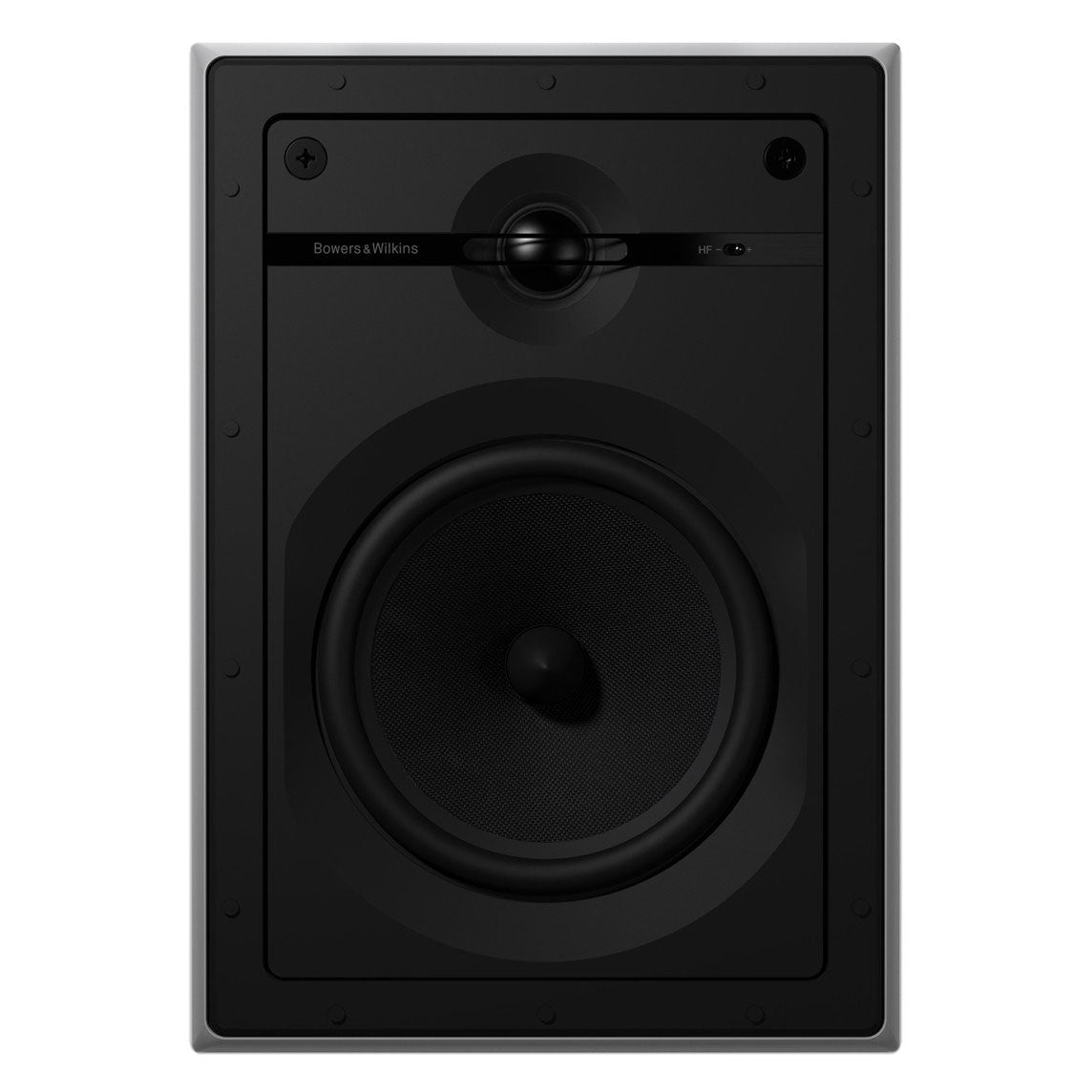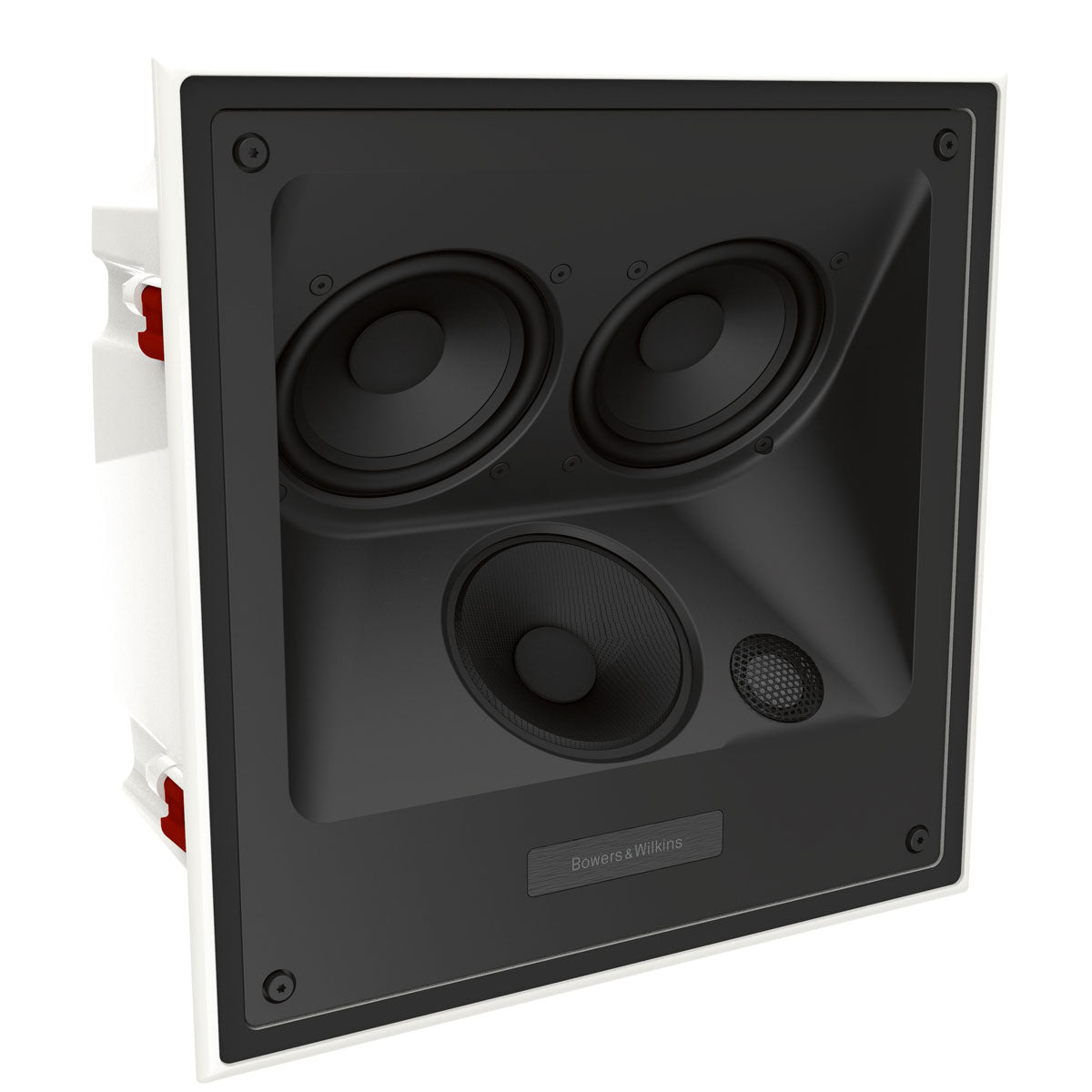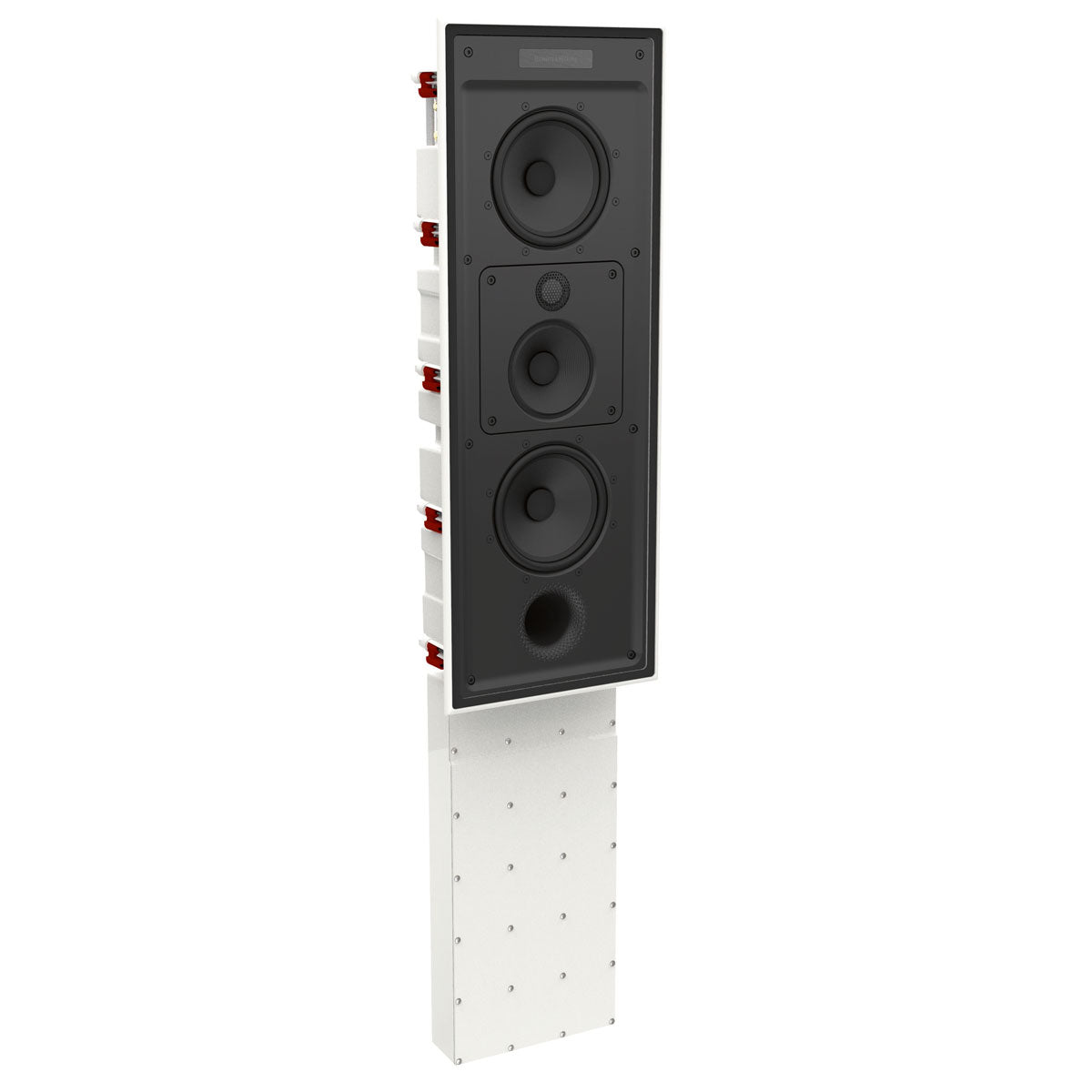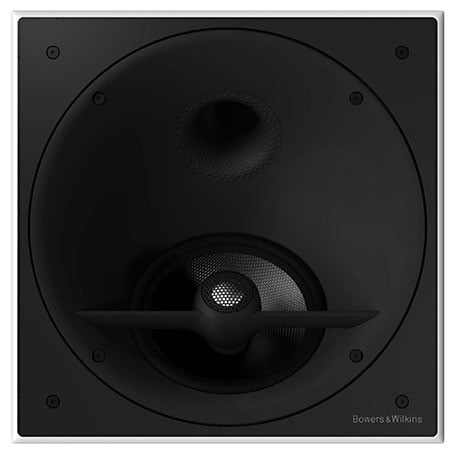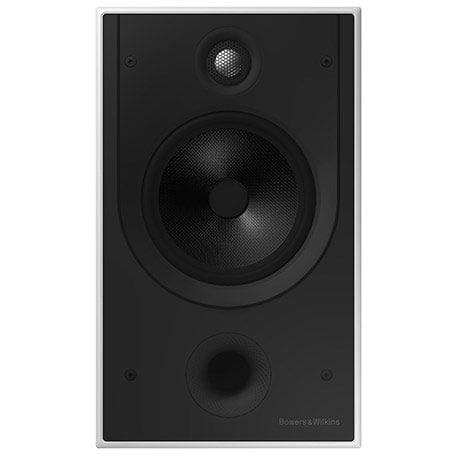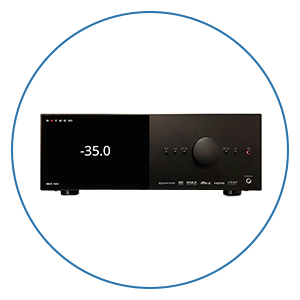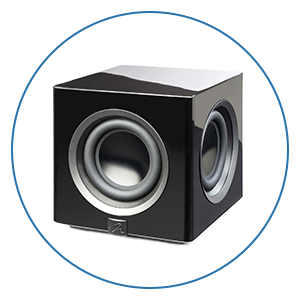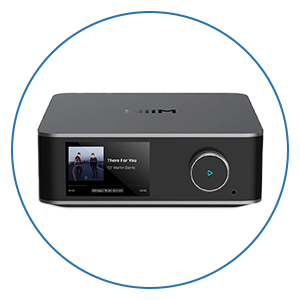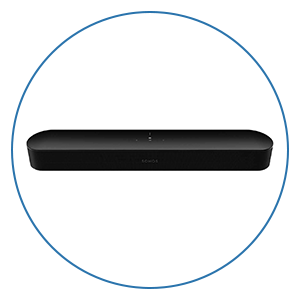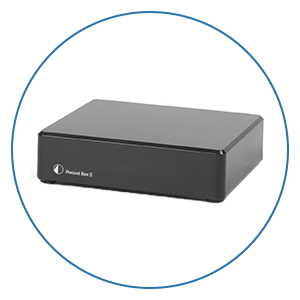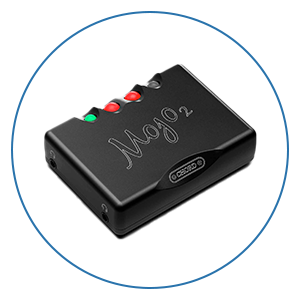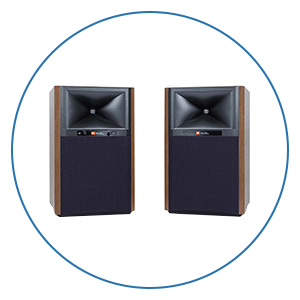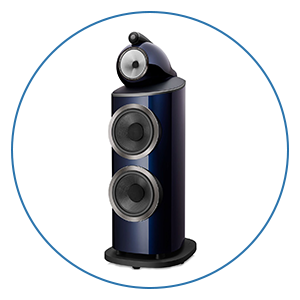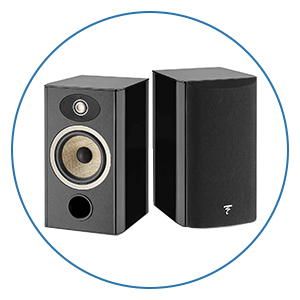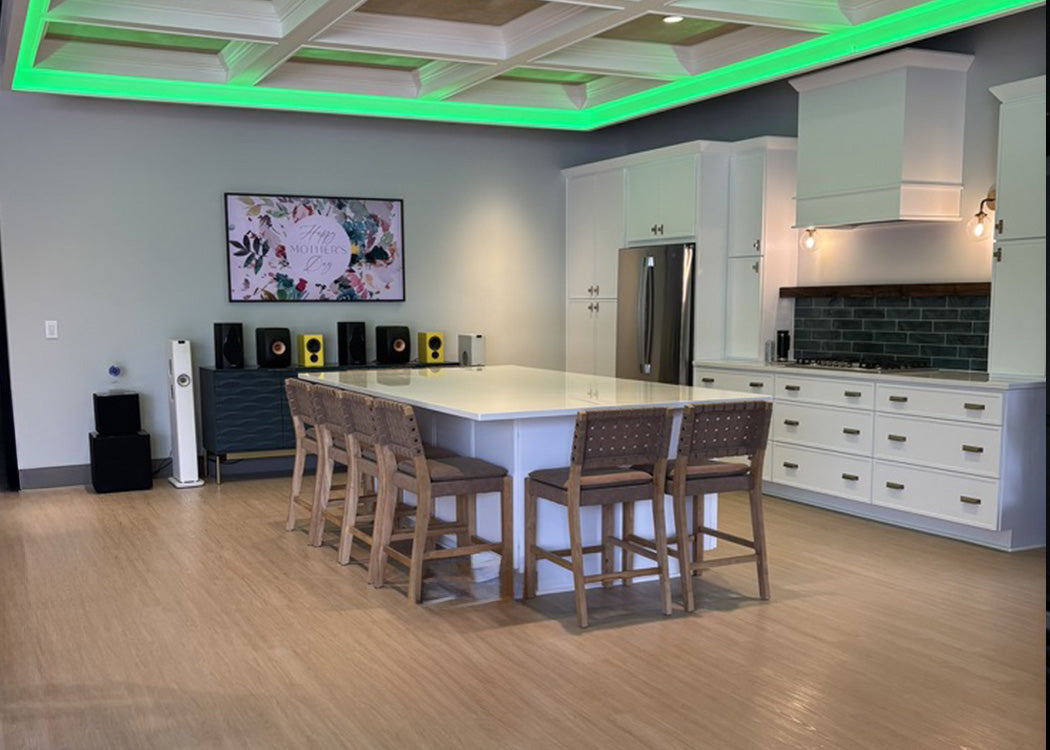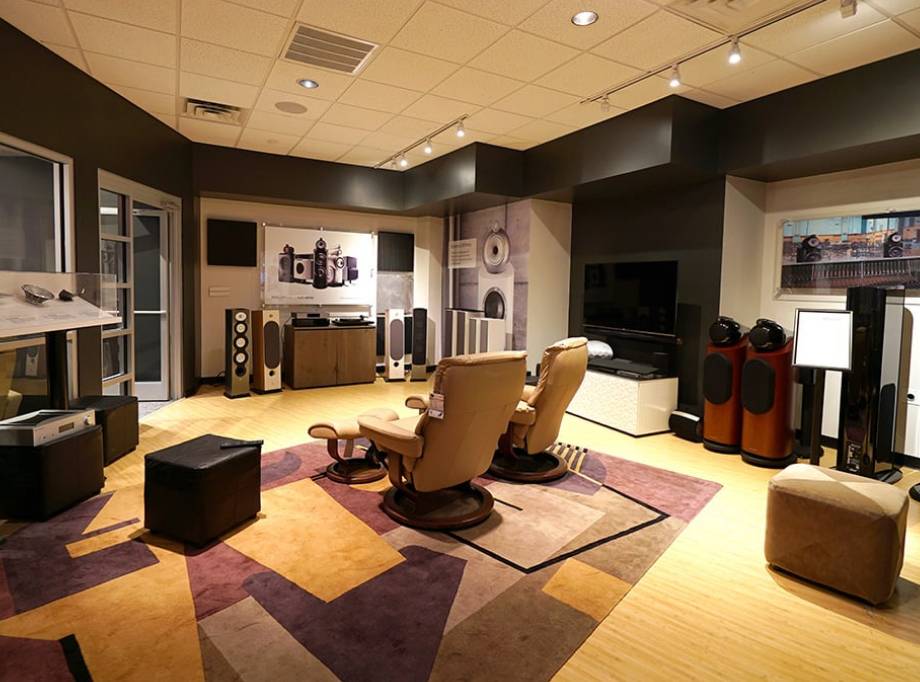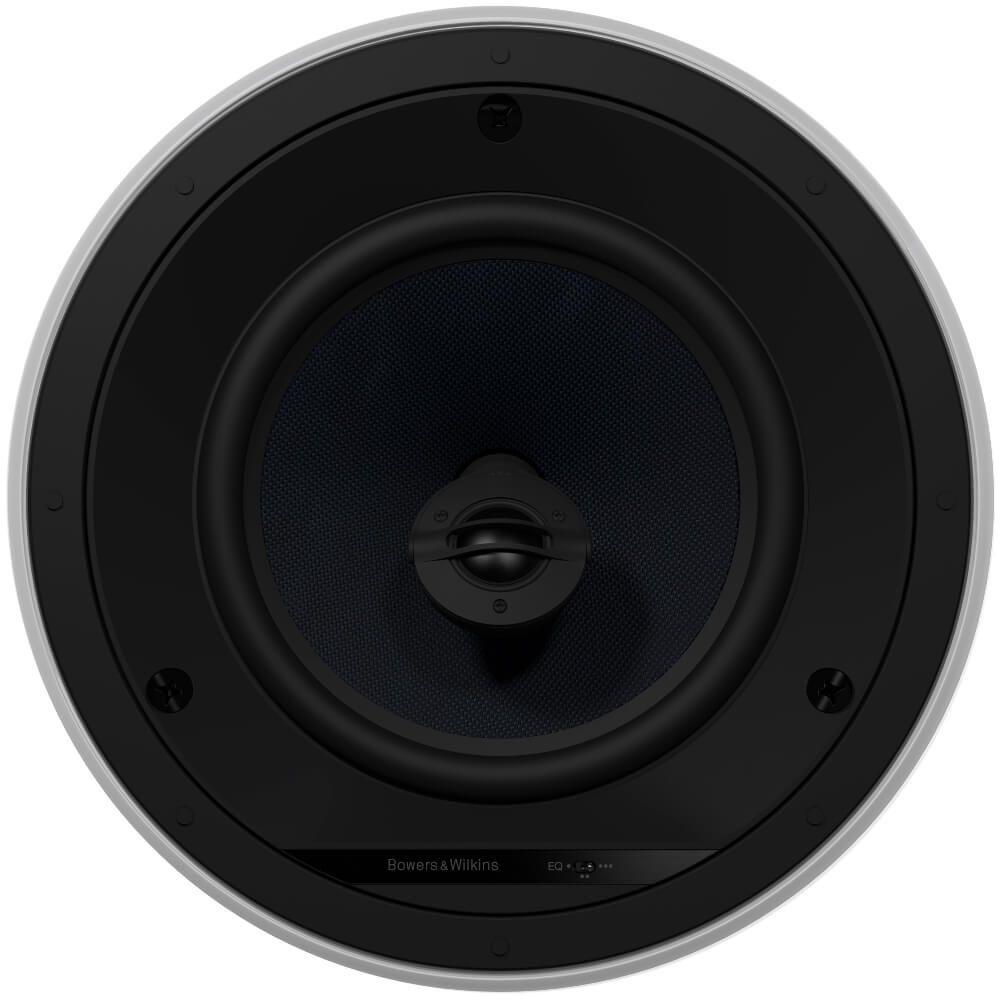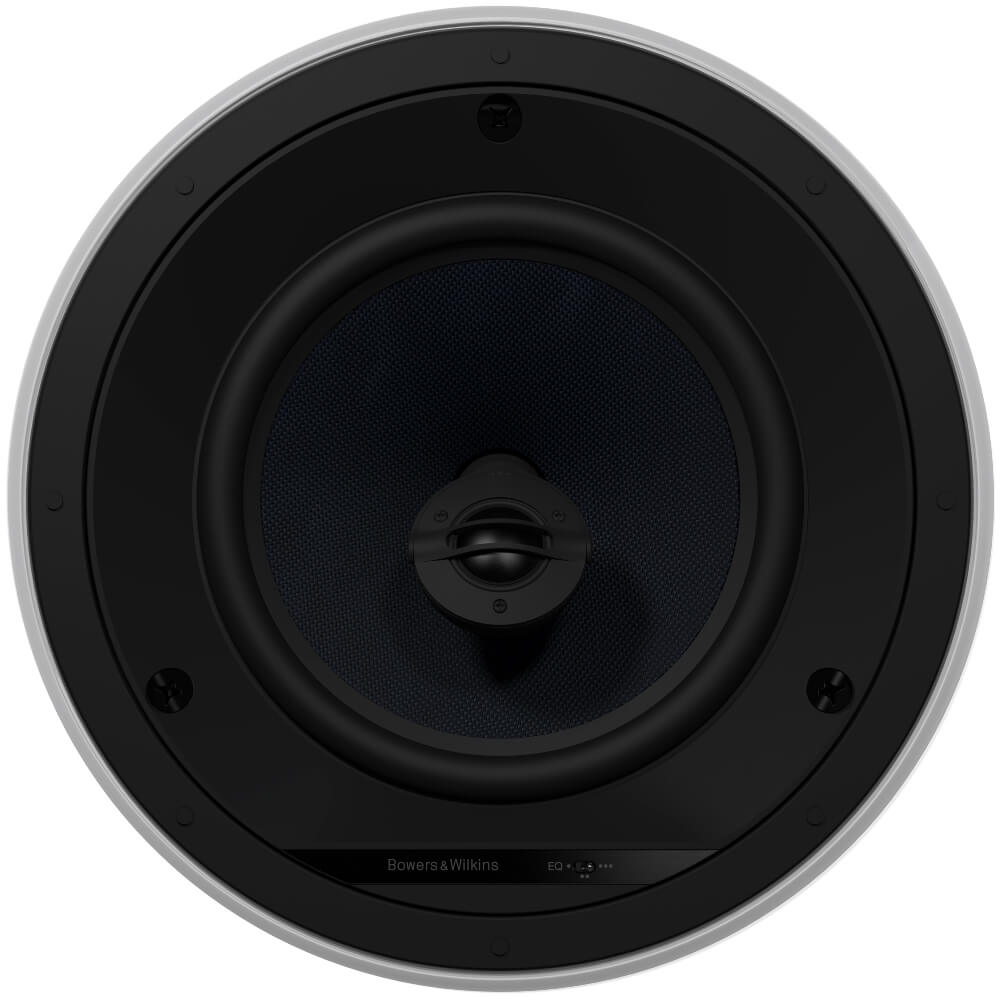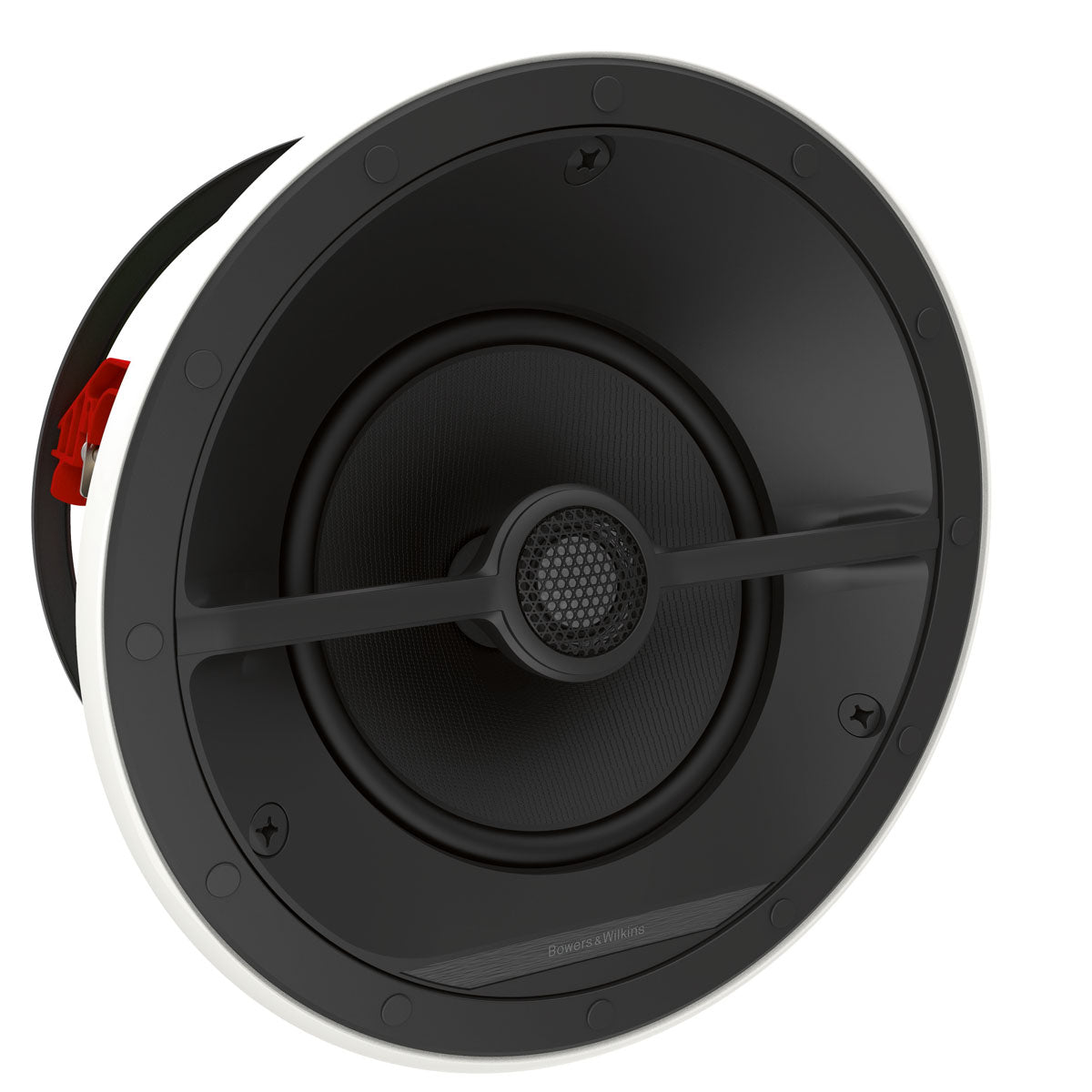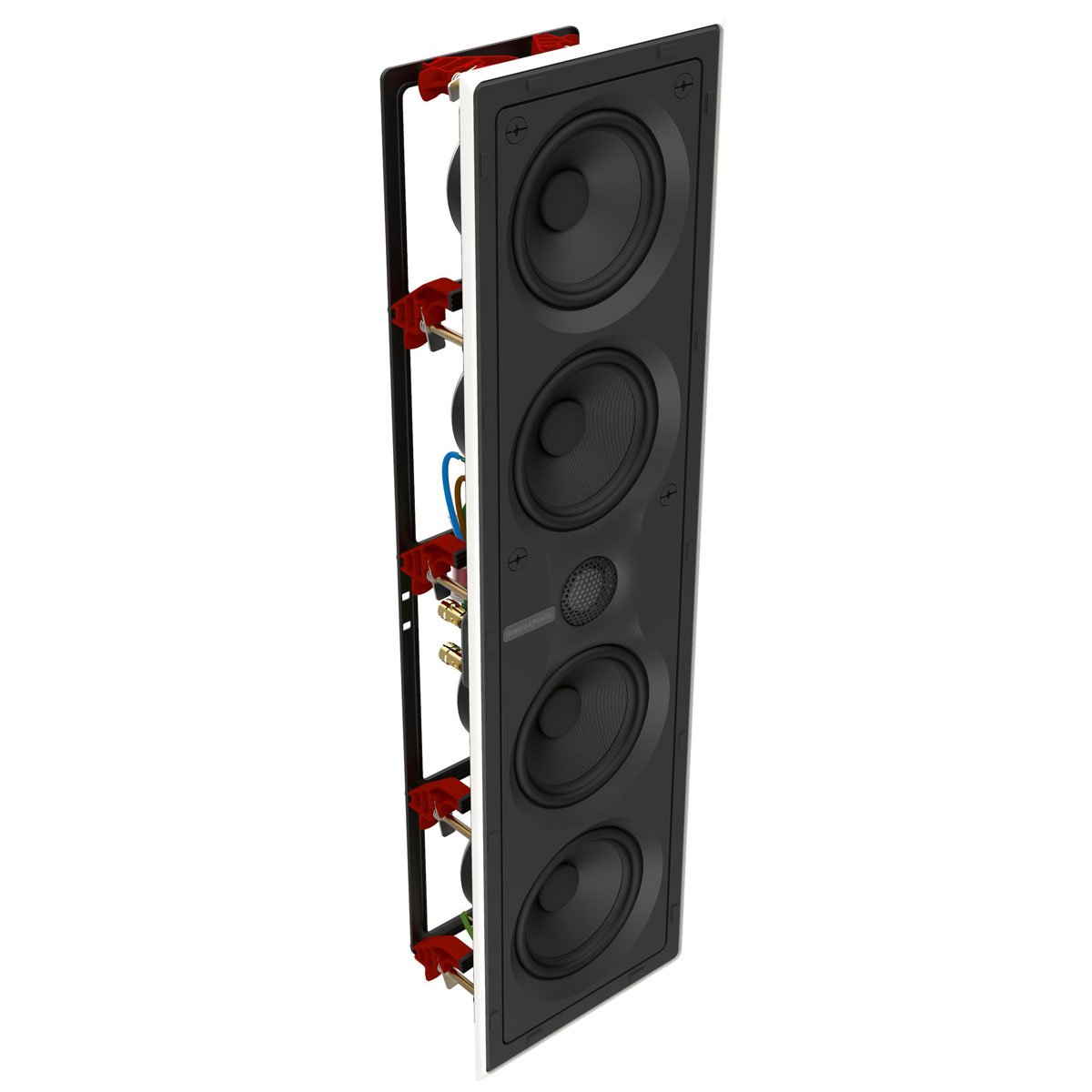Step 5
Trace your speaker template & cut
Once you determine that your desired placement is free of obstructions, it’s time to cut! First, use a level to align the speaker template and ensure it’s straight. Using the supplied cut-out template, mark a cut line on the existing wall. Check that the cut line defines the correct dimensions specified for your speaker. Cut along the line with a drywall saw to carve the cutout.
Expert Advice: Start by cutting a smaller hole within the final cutout. This will allow you to use your hand and/or a glow rod to feel & around be sure your path is clear up and down the wall to run your speaker cable before cutting out the full size of the speaker. Cut this exploratory hole with beveled edges, with the point of the blade pointing toward the center of the speaker location (as if you’re carving the top of a pumpkin) as you move around. If you need to change your speaker location, the piece you cut out will fit into the hole like a lid and make for easier drywall repair.
For new construction or pre-drywall installation, you can usually purchase rough-in brackets from the speaker company that will mount between two studs. Rough-in brackets will mark your speaker placement before the drywall goes up and provides a sturdy bracing between two studs.
If your speakers are installed in a wall between two rooms, you may want to consider adding a backer-box to limit the sound that leaks through.
